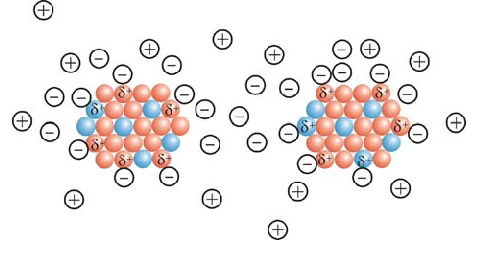What are electrical nano particles?
Researcher and author: Dr. ( Afshin Rashid)
Note: The use of particles from the micro-scale to the nano-scale provides benefits for various scientific fields, but since a large percentage of their atoms are on the surface, nanomaterials can be highly reactive and pose potential risks. to bring for humans.
Electrical nanoparticles are of great interest due to their wide application, both in industry and in natural sciences. While natural materials have constant physical properties regardless of size, the size of a nanoparticle determines its physical and chemical properties. Therefore, the properties of a material change as its size approaches the nanoscale and the percentage of atoms on the surface of the material becomes significant. The important feature of all nanostructures is that the number of surface atoms in them is more than the number of volume atoms. This ratio increases with decreasing nanoparticle size. Therefore, the size of the nanoparticle is considered its most important feature. The range of activity of nanoparticles depends on the nature and shape of the nanostructure. However , if the energy of the nanoparticle field is comparable to the energy of electromagnetic radiation and if within a certain range The wavelength of the chemical reactions in the irradiated materials will cause significant changes, the activity of nanoparticles up to 100 nm will be significant.
The surface atoms of electrical nanoparticles are not compensated in terms of energy. In general, the results of the growth of electric nanoparticle energy can be expressed as the total energy of the atoms on the surface of the particle. The freedom of movement of atoms on the surface of nanostructures is limited and only vibrational movements and the movement of electrons are possible. These two electrokinetic reactions are dependent on each other because the displacement of the electron clouds of the atoms definitely changes the vibrational frequencies of the bonds of the atoms of the nanoparticles . On the other hand, changing the location of valence electrons in the bonds changes the polarity of the bond and the bodies known as supermolecules . In this case, electron transfer to a higher energy level becomes possible. In this sense, carbon nanotubes (CNTs) are the most interesting investigated species. In this nanotube The carbons that protect them from the environment interact, and for this reason, these CNTs nanotubes are called metal/carbon nanotubes.
Conclusion :
The use of electrical particles from the microscale to the nanoscale provides benefits for various scientific fields, but because a large percentage of their atoms are on the surface, nanomaterials can be highly reactive and pose potential hazards to Bring people with you.
Researcher and author: Dr. ( Afshin Rashid)
Specialized doctorate in nano-microelectronics





